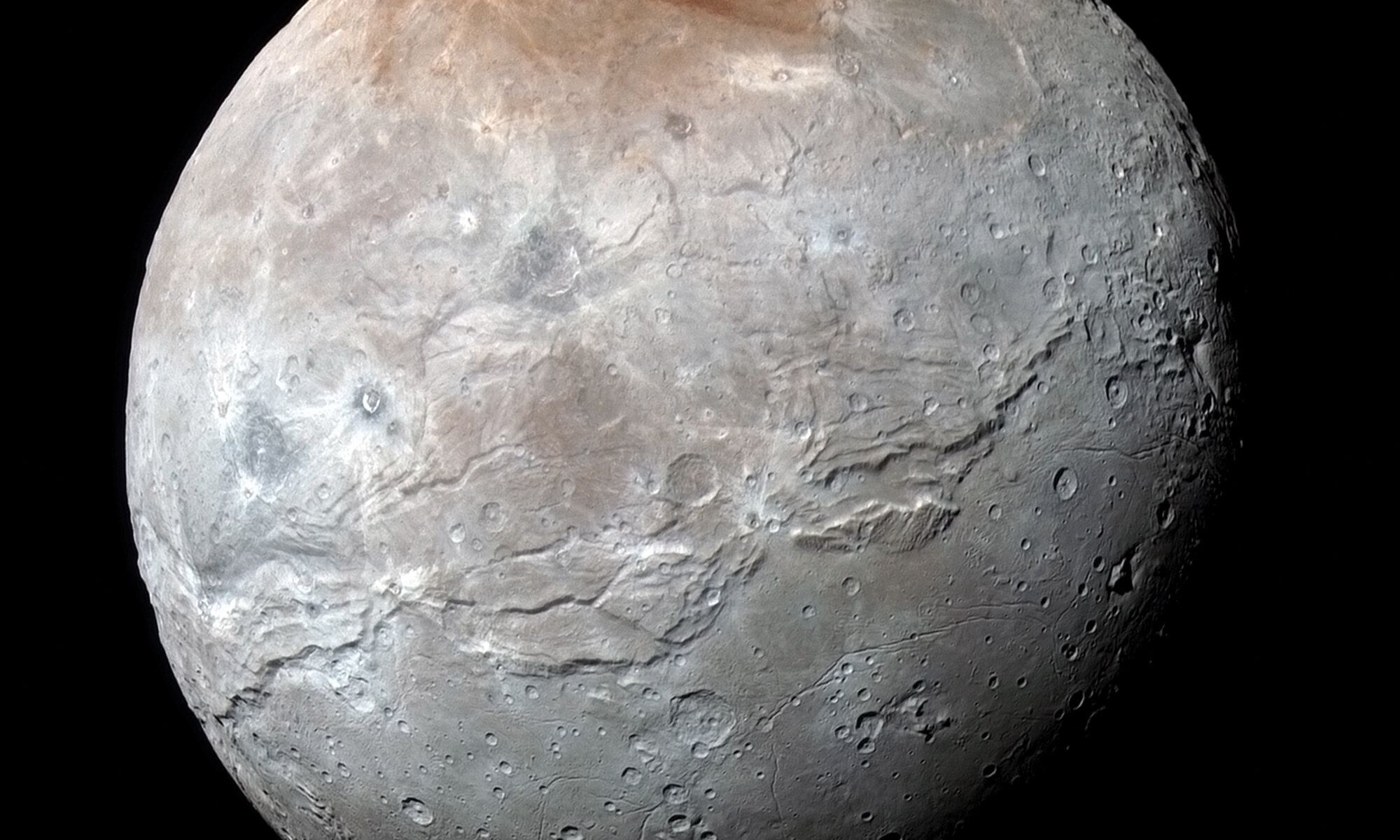Pluto may have been downgraded from full-planet status, but that doesn’t mean it doesn’t hold a special place in scientist’s hearts. There are practical and sentimental reasons for that – Pluto has tantalizing mysteries to unlock that New Horizons, the most recent spacecraft to visit the system, only added to. To research those mysteries, a multidisciplinary team from dozens of universities and research institutes has proposed Persephone – a mission to the Pluto system that could last 50 years.
Continue reading “A New Mission To Pluto Could Answer the Questions Raised by New Horizons”Landing on Pluto May Only Be A Hop Skip and Jump Away
There are plenty of crazy ideas for missions in the space exploration community. Some are just better funded than others. One of the early pathways to funding the crazy ideas is NASA’s Institute for Advanced Concepts. In 2017 and again in 2021, it funded a mission study of what most space enthusiasts would consider only a modestly ambitious goal but what those outside the community might consider outlandish—landing on Pluto.
Continue reading “Landing on Pluto May Only Be A Hop Skip and Jump Away”Pluto Has an Ocean of Liquid Water Surrounded by a 40-80 km Ice Shell
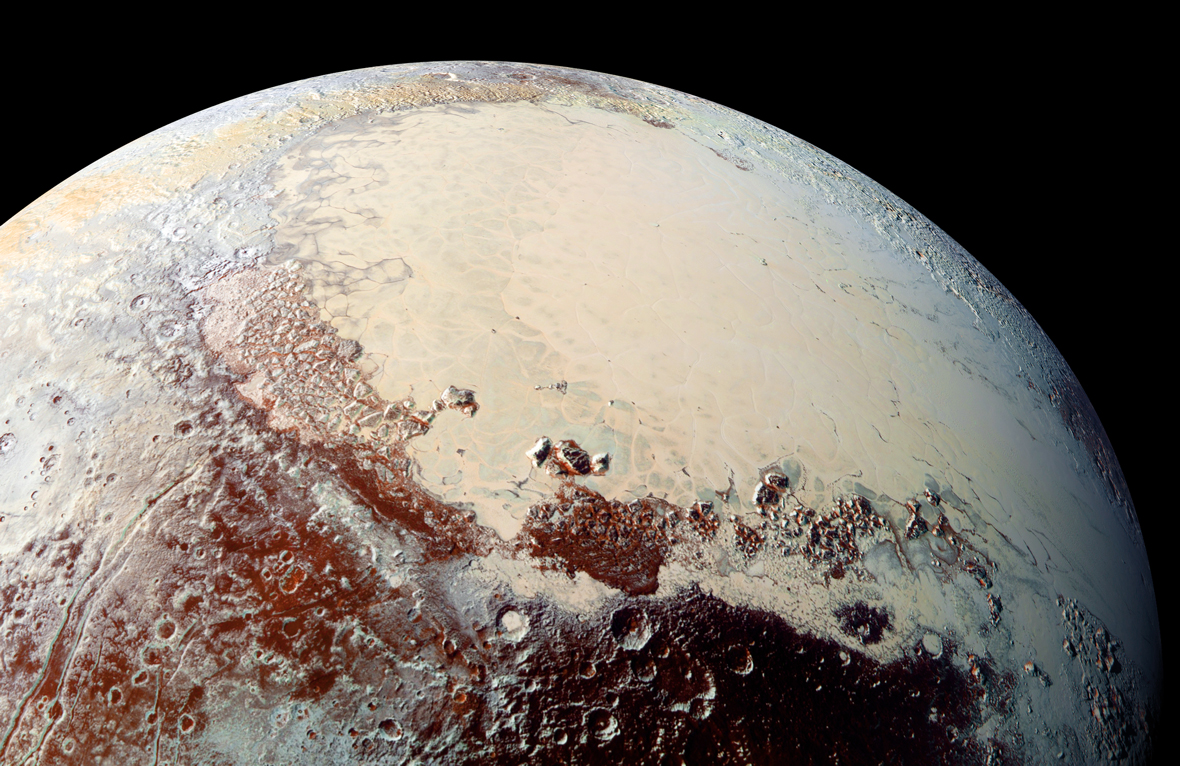
On July 14th, 2015, the New Horizons spacecraft conducted the first-ever flyby of Pluto, which once was (and to many, still is) the ninth planet of the Solar System. While the encounter was brief, the stunning images and volumes of data it obtained revealed a stunningly vibrant and dynamic world. In addition to Pluto’s heart, floating ice hills, nitrogen icebergs, and nitrogen winds, the New Horizons data also hinted at the existence of an ocean beneath Pluto’s icy crust. This effectively made Pluto (and its largest moon, Charon) members of the “Ocean Worlds” club.
Almost a decade after that historic encounter, scientists are still making discoveries from New Horizons data. In a new paper, planetary scientists Alex Nguyen and Dr. Patrick McGovern used mathematical models and images to learn more about the possible ocean between Pluto’s icy surface and its silicate and metallic core. According to their analysis, they determined that Pluto’s ocean is located beneath a surface shell measuring 40 to 80 km (25 to 50 mi), an insulating layer thick enough to ensure that an interior ocean remains liquid.
Continue reading “Pluto Has an Ocean of Liquid Water Surrounded by a 40-80 km Ice Shell”How Did Pluto Get Its Heart? Scientists Suggest an Answer
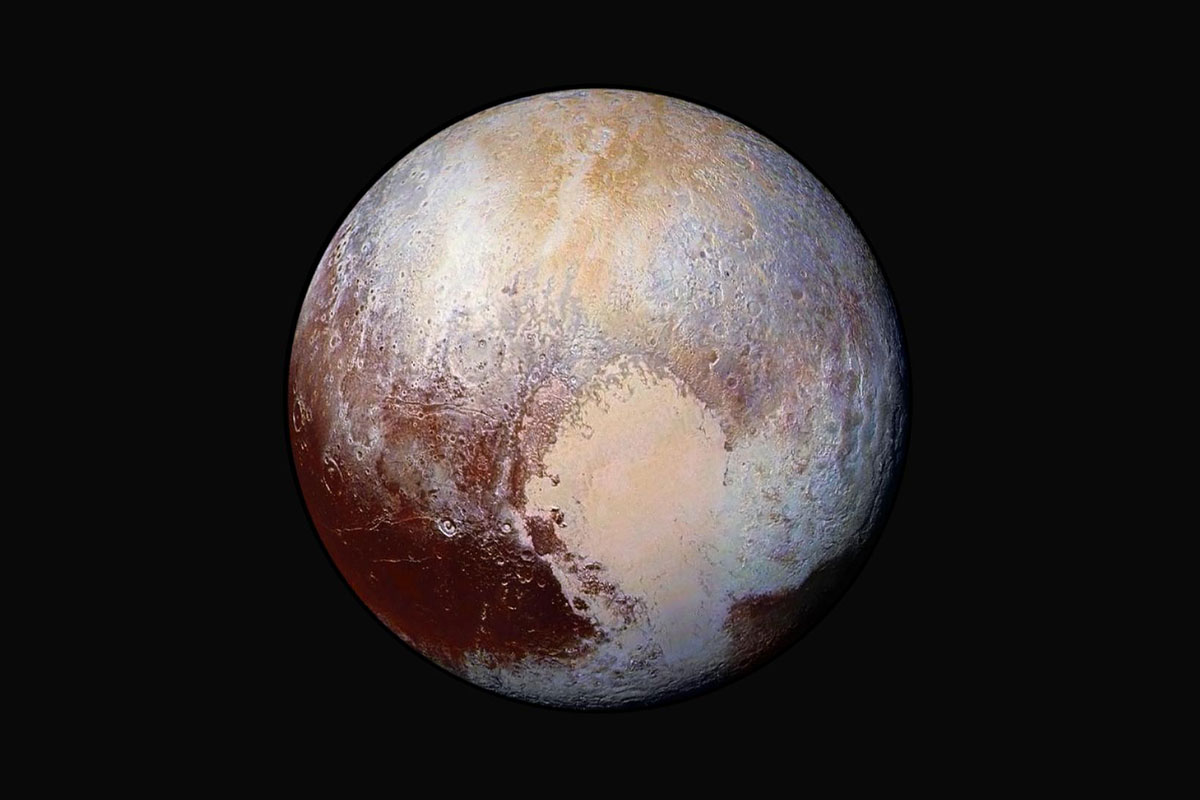
The most recognizable feature on Pluto is its “heart,” a relatively bright valentine-shaped area known as Tombaugh Regio. How that heart got started is one of the dwarf planet’s deepest mysteries — but now researchers say they’ve come up with the most likely scenario, involving a primordial collision with a planetary body that was a little more than 400 miles wide.
The scientific term for what happened, according to a study published today in Nature Astronomy, is “splat.”
Astronomers from the University of Bern in Switzerland and the University of Arizona looked for computer simulations that produced dynamical results similar to what’s seen in data from NASA’s New Horizons probe. They found a set of simulations that made for a close match, but also ran counter to previous suggestions that Pluto harbors a deep subsurface ocean. They said their scenario doesn’t depend on the existence of a deep ocean — which could lead scientists to rewrite the history of Pluto’s geological evolution.
Continue reading “How Did Pluto Get Its Heart? Scientists Suggest an Answer”Should We Send Humans to Pluto?
Universe Today has examined the potential for sending humans to Jupiter’s icy moon, Europa, the planet Venus, and Saturn’s largest moon, Titan, all despite their respective harsh environments and vast distances. These conversations with planetary science experts determined that humans traveling to these worlds in the foreseeable future could be possible, despite the harsh conditions and travel time, specifically to Titan.
Continue reading “Should We Send Humans to Pluto?”An Unusual Crater on Pluto Might be a Supervolcano
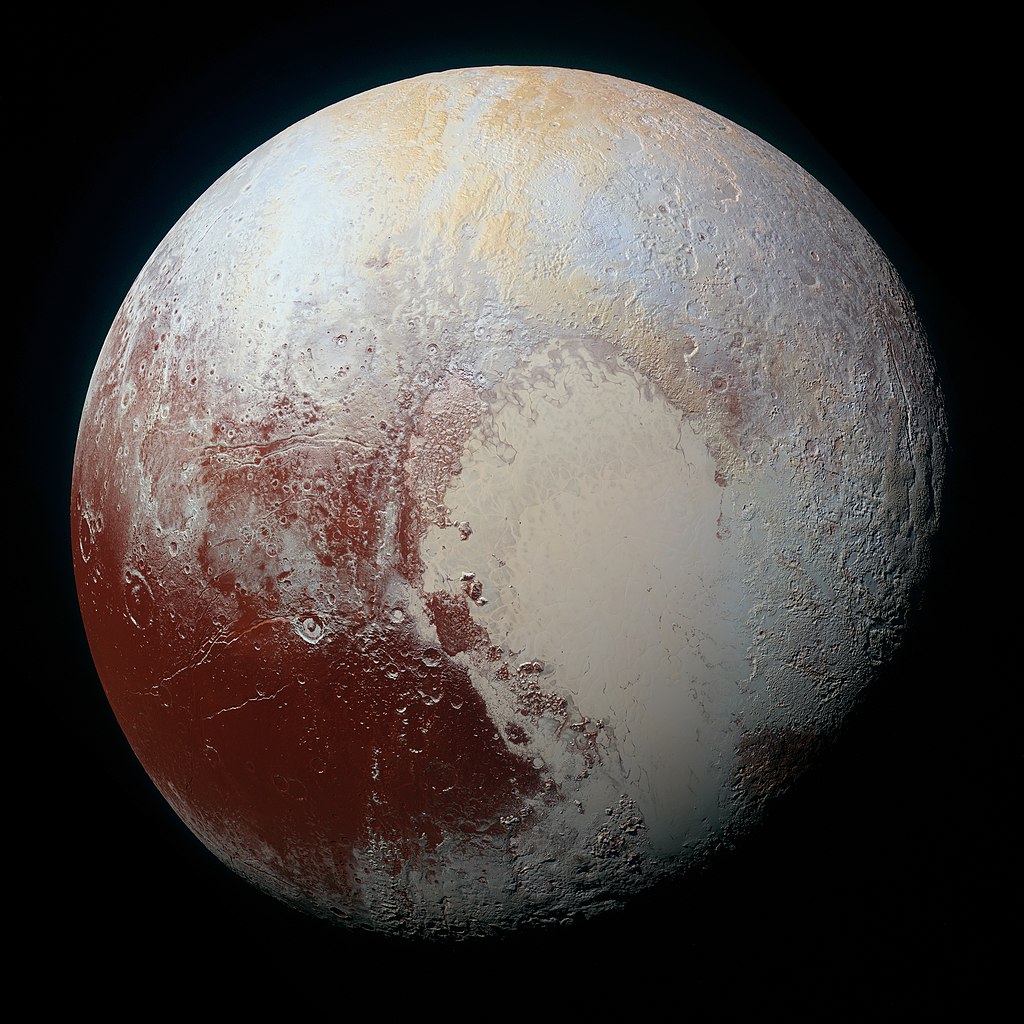
Pluto with a super-cryovolcano? Why not! All the elements are there, just not in the way we normally think of volcanoes. And, cryovolcanoes are the reason why Pluto’s surface looks the way it does. A recent research paper explains why Pluto could be the home of the latest supervolcano discovery in the Solar System.
Continue reading “An Unusual Crater on Pluto Might be a Supervolcano”Freezing Ocean Might Not Be Responsible for Cryovolcanic Flows on Pluto’s Moon, Charon
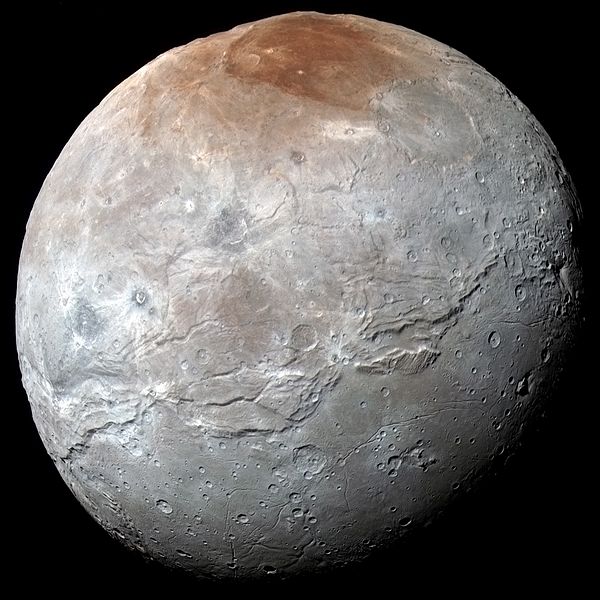
In a recent study scheduled to be published in the journal Icarus in March 2023, a team of researchers led by the Southwest Research Institute (SwRI) modeled a potential correlation between an ancient freezing ocean with cryovolcanic flows and surface canyons on Pluto’s largest moon, Charon. Their hypothesis was that when Charon’s interior ocean froze long ago, the significant stress put on the icy outer shell from the addition of more ice to the bottom of the existing shell could have been responsible for the cryovolcanic flows on the surface.
Continue reading “Freezing Ocean Might Not Be Responsible for Cryovolcanic Flows on Pluto’s Moon, Charon”Will Pluto finally answer, ‘Are we alone?’

We previously examined how Neptune’s largest moon, Triton, could answer the longstanding question: Are we alone? With its nitrogen geysers discovered by NASA’s Voyager 2 spacecraft, possible interior ocean, and lack of craters, Triton could be geologically active, which makes it an excellent celestial body for future astrobiology missions. But Triton isn’t the only place on the edge of the solar system which garners interest for finding life beyond Earth, as one of the most familiar and well-known (former) planets also exhibits evidence of recent geological activity and crater-less surface features. This is everyone’s favorite dwarf planet, Pluto, which like Triton has only been visited by one spacecraft, this one being NASA’s New Horizons, in 2015. But even with only one visitation, we discovered so much about Pluto, and what it might be hiding, as well.
Continue reading “Will Pluto finally answer, ‘Are we alone?’”Charon’s Red Cap at its North Pole? We Might Have an Answer
Pluto’s largest moon, Charon, started off as a beautiful, smooth red grape until someone came along, mostly peeled it, tried to smoosh it, then just gave up and walked away, leaving the poor moon to look like the absolute travesty that it is. Okay, so maybe that’s not exactly what happened, but Charon just looks like a mess and scientists want to know why. Never mind its smooshed equator, but what’s the deal with its red cap? Where did it come from and why is it red?
Continue reading “Charon’s Red Cap at its North Pole? We Might Have an Answer”Eight Missions are Getting Extensions, Most Exciting: OSIRIS-REx is Going to Asteroid Apophis

NASA has granted mission extensions to eight different planetary missions, citing the continued excellent operations of the spacecraft, but more importantly, the sustained scientific productivity of these missions, “and the potential to deepen our knowledge and understanding of the solar system and beyond.” Each mission will be extended for three more years.
One of the most exciting extensions gives a new mission to the OSIRIS-REx spacecraft, sending it to one of the most infamous asteroids of them all, the potentially hazardous asteroid Apophis.
Continue reading “Eight Missions are Getting Extensions, Most Exciting: OSIRIS-REx is Going to Asteroid Apophis”



